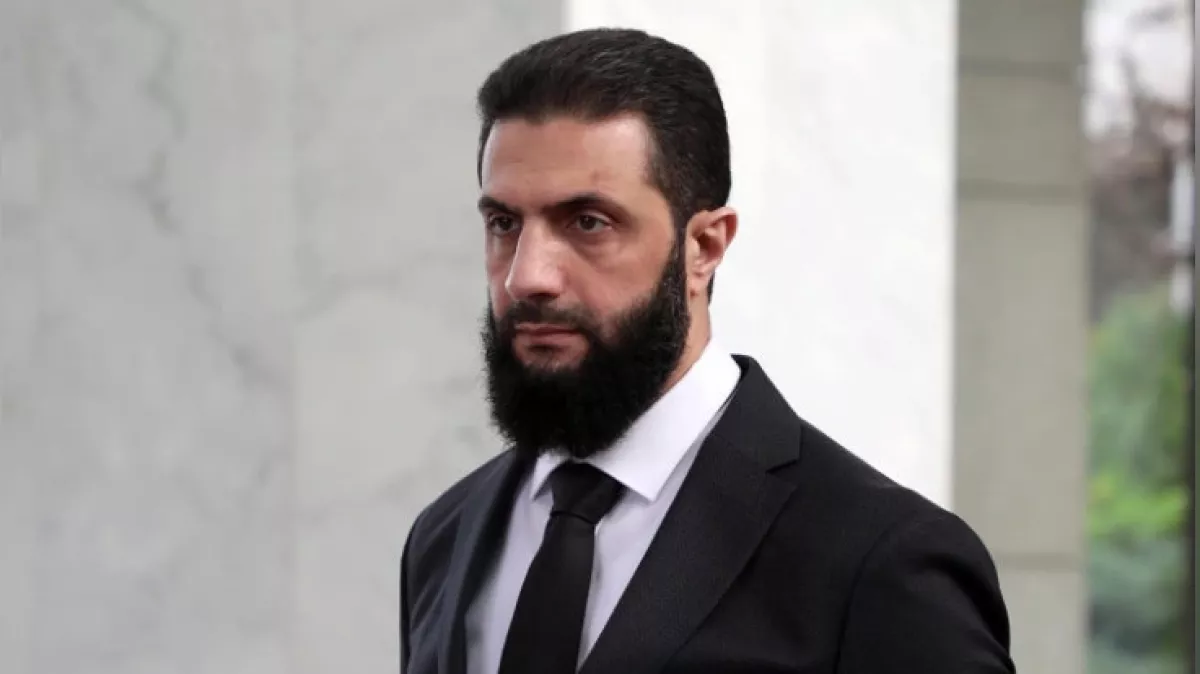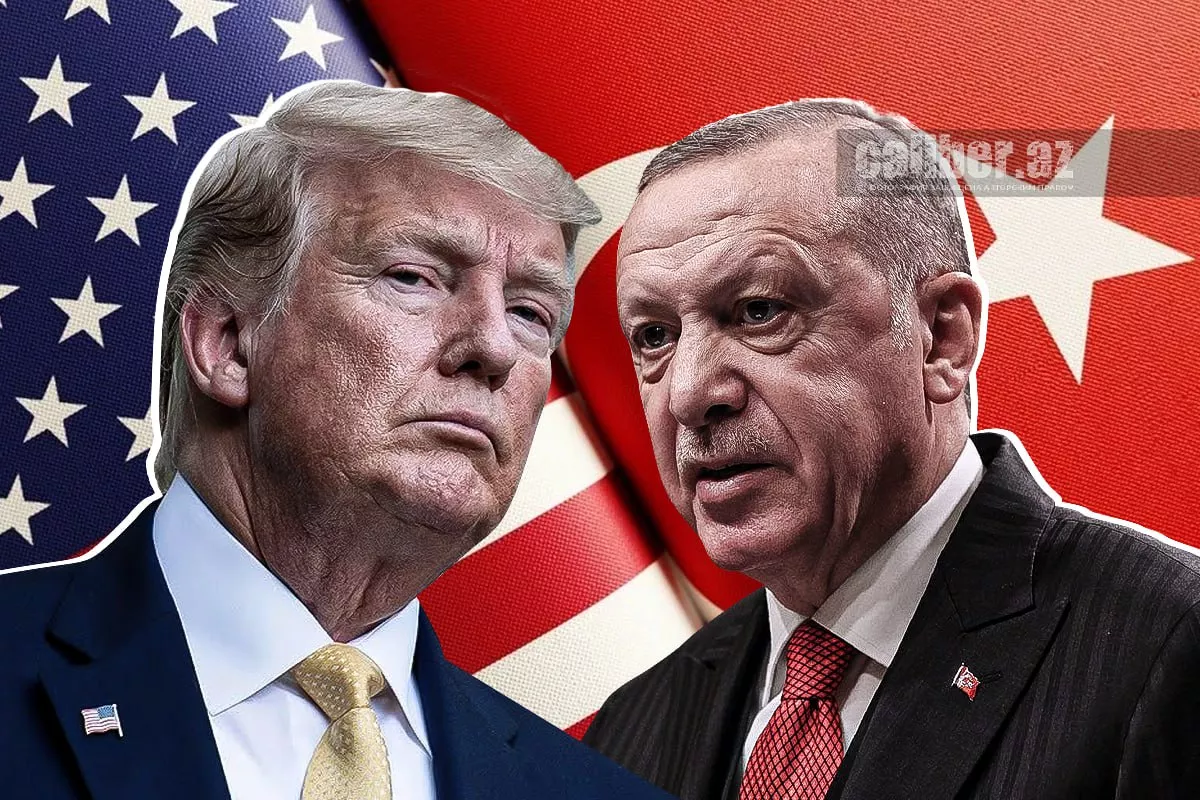US withdrawal from Syria: Turning point for Middle East What lies ahead for Kurdish forces?
Israeli media report that U.S. President Donald Trump plans to completely withdraw American troops from Syria. The start of these reports was a message published this week by Israel's official state television and radio channel, Kan 11. However, neither White House officials nor Trump himself have confirmed this yet. Nevertheless, it appears that the new administration is negotiating this with the U.S. regional allies, namely Turkey and Israel. It is likely a matter of testing the waters, and information about this has begun to leak into the media, although final decisions have not yet been made.
On January 28, Kan reported that "senior White House officials conveyed a message to their Israeli counterparts indicating that President Trump intends to pull thousands of U.S. troops from Syria." There are currently 2,000 U.S. military personnel in Syria, so if this message is confirmed, it would signal preparations for a complete troop withdrawal. The channel added that the "withdrawal of American forces from Syria will raise significant concerns in Tel Aviv." The ruling factions in the country view the U.S. presence in northeastern Syria as a stabilizing factor.
Shortly before Trump's inauguration, U.S. Secretary of Defense in the Biden administration, Lloyd Austin, defended the U.S. presence there as part of the mission to "combat ISIS." U.S. defence leaders have long argued that the "Islamic State" (ISIS) could revive if the Pentagon withdraws from Syria.
However, Trump himself repeatedly insisted on the need to withdraw from Syria during his previous presidential term. But at that time, he was unable to achieve this due to opposition from some senior U.S. officials. They insisted on maintaining U.S. military bases in Syria for several reasons.
Firstly, these troops were helping Kurdish armed groups, the Syrian Democratic Forces (SDF), in their fight against ISIS.
Secondly, the U.S. did not want to leave its allies — the Kurds — without support, as they faced an offensive from both Syrian opposition forces and, at the same time, Bashar al-Assad’s forces.
Thirdly, according to remarks made by Trump’s former National Security Advisor, John Bolton, the U.S. feared (and this was the main argument) that in the event of their withdrawal, a quarter of Syrian territory, including its key oil fields, would fall into the hands of the then-ruler of Syria, Bashar al-Assad, and his allies — the Iranians. Since Iran is the U.S.'s main adversary in the Middle East, Washington did not want to strengthen Tehran. On the contrary, as long as the oil fields remained under Kurdish control, it supported their armed forces and administration.
However, today, some of these issues have been resolved.
Firstly, ISIS has been defeated. However, there remains the problem with militants, approximately 12,000 of whom are held in the Al-Hawl camp and other facilities under Kurdish forces' guard, along with 80,000 of their relatives. Additionally, some groups of militants are hiding in the desert.
Secondly, the Assad regime has been destroyed by the Hayat Tahrir al-Sham (HTS) group, which means that Iran's influence in Syria has been virtually eradicated. Thus, the main reason why U.S. officials insisted on maintaining a military presence in Syria has disappeared.

Thirdly, power in Damascus has passed to the HTS group, whose leader, Ahmed al-Sharaa, recently declared himself president of the country. Although HTS intends to maintain a one-party system, i.e., an openly authoritarian regime, it has renounced international terrorism. The group aims to strengthen its power in Syria and is currently working to ensure the safety of ethnic and religious minorities — Christians, Alawites, Shiites, and others. Notably, HTS has been at war with ISIS for years, destroying its militants whenever possible (although some pledged allegiance to HTS after breaking away from ISIS). HTS seeks cooperation with Türkiye and Saudi Arabia — U.S.-friendly countries — and prides itself on having removed Syria from Iran's sphere of influence. Ahmed al-Sharaa is working to lift international sanctions on Syria and is trying to establish friendly relations with the European Union and the United States, with negotiations already underway to lift sanctions. Additionally, Russia's influence in Syria has diminished, and it is possible that Ahmed al-Sharaa will force the Russians to dismantle their military bases.
Finally, fourthly, Trump is now forming an administration of loyalists, so it is unlikely that there will be forces capable of sabotaging his policy as was the case during his previous term.
The foundation of U.S. policy is the national security strategy, which declares China — the rising new superpower — as the primary and multidimensional threat to America. The U.S. intends to shift its main forces to the Indo-Pacific region and strengthen its alliances there — with India, Japan, Australia, South Korea, and others. They no longer wish to expend significant resources in the Middle East and would prefer to outsource the region to friendly countries and partners — Israel, Türkiye, Saudi Arabia, and their allies.

Moreover, thanks to shale oil and the development of green energy, the U.S. has achieved energy autonomy from the Middle East.
If the U.S. withdraws from Syria, an HTS offensive against Kurdish military formations in northern and eastern Syria will become inevitable.
Currently, the Kurdish-led Syrian Democratic Forces (SDF) control 30 per cent of Syrian territory north and east of the Euphrates, as well as Syria’s main oil fields. Before the start of the civil war in 2011, these fields produced an average of about 400,000 barrels of oil per day, which met much of the country’s needs. It is hard to imagine that Ahmed al-Sharaa, who currently commands the most powerful military formations in Syria, would allow these oil fields to remain under the control of the SDF leadership. Negotiations over the SDF giving up their autonomy and submitting directly to the Syrian Ministry of Defense, i.e., HTS, which had been ongoing in recent days, ended without success. Therefore, if American troops leave, the new leadership of Syria will likely begin an offensive against the Kurds at some point (not necessarily immediately).
But the SDF faces an even more powerful adversary than HTS: Türkiye. The leadership of the SDF consists of militants from the Kurdistan Workers' Party (PKK). This organization has been waging a terrorist war against Türkiye for 40 years, seeking autonomy for Turkish Kurds living in the eastern part of the country. The PKK currently operates against Turkish forces from its bases in northern Iraq, in the Qandil Mountains. However, it has effectively managed to create a large enclave in Syria with the help of the SDF, reaching the Turkish border. Türkiye has repeatedly stated that its goal is the complete elimination of PKK supporters' presence in Syria. In recent years, Turkish forces have launched multiple armed operations against the SDF and succeeded in pushing them out of several areas. However, each time, the U.S. held back the Turkish military from launching a full-scale offensive. With the complete withdrawal of U.S. forces, the likelihood of a Turkish offensive against the Kurds becomes very high.
Finally, Türkiye has a closer ally in Syria than HTS: the Syrian National Army (SNA), which consists of about 50,000 troops. Like HTS, the SNA is made up of anti-Assad opposition forces, but unlike HTS, it is under the command of Turkish officers. In the event of a U.S. withdrawal, the SNA will join the offensive against the Kurds. Currently, the group is engaged in localized battles with Kurdish forces near the Tishrin Dam.
So, if the U.S. decision to withdraw from Syria is confirmed, the dominant armed groups in Syria, along with Turkish forces, will likely launch an offensive against the Kurdish autonomous administration at some point.








